Imagine walking into a house where the walls, furniture, and even the clock are made entirely of old newspapers. In Rockport, Massachusetts, this quirky dream became a reality thanks to Elis Stenman, a mechanical engineer who built his famous Paper House starting in 1922.
Today, visitors from around the world flock to this unusual attraction to see what creativity and thousands of newspapers can accomplish. What began as a simple experiment in insulation turned into a full-fledged architectural marvel.
The house has stood the test of time, drawing curious minds and camera lenses nearly a century later.
1. Built as a Summer Hobby Project
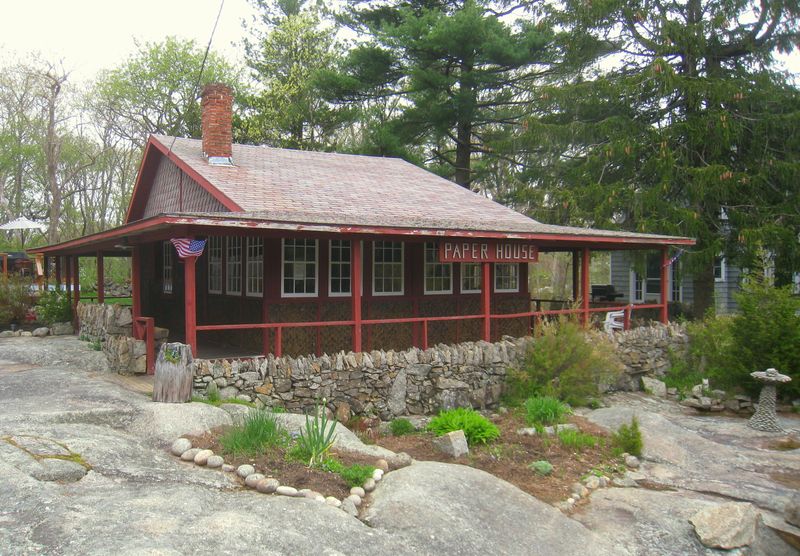
Elis Stenman originally planned the Paper House as a fun summer project while vacationing in Rockport. He wanted to test how durable newspaper could be as a building material. What started as a simple experiment quickly turned into a lifelong passion that consumed over two decades of his time.
The house frame uses traditional wood construction, but nearly everything else incorporates rolled and glued newspaper. Stenman carefully selected papers, rolled them into tight logs, and layered them to create sturdy walls. His attention to detail shows in every corner of this remarkable structure.
Visitors love hearing how this hobby project transformed into a tourist attraction that still stands strong today. The house proves that creativity and determination can turn everyday materials into something extraordinary.
Walking through the rooms feels like stepping into a time capsule of American history and innovation.
2. Walls Made from Over 100,000 Newspapers
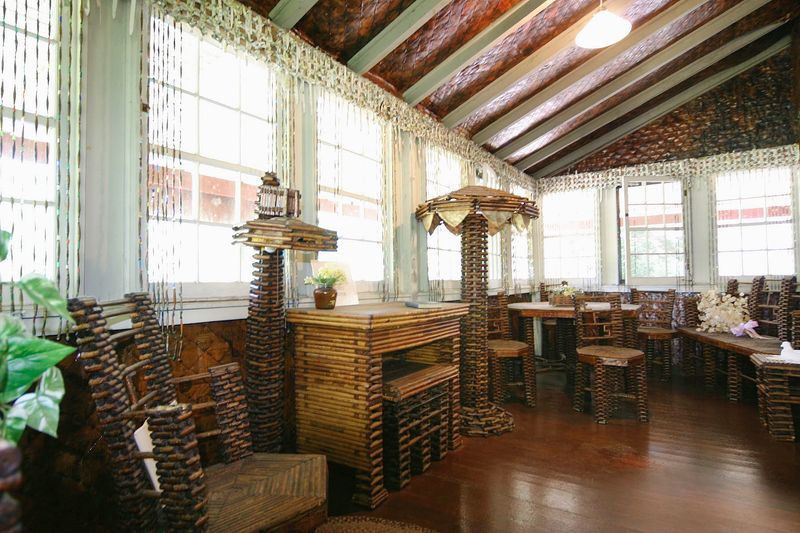
More than 100,000 newspapers went into constructing the walls of this incredible house. Stenman collected papers from the 1920s through the 1940s, giving the structure historical significance beyond its unusual construction. Each paper was carefully rolled, glued, and pressed to create dense, insulating layers.
The thickness of the newspaper walls reaches about an inch in some places, providing surprising insulation. Stenman used a special glue mixture to bind the papers together, making them resist moisture and decay. The result is walls that have lasted nearly a century with minimal deterioration.
Guests often spend time reading headlines visible on the walls, discovering stories from decades past. You can spot news about presidential elections, world events, and local happenings frozen in time. This living history lesson makes every visit educational and entertaining for all ages.
3. Furniture Crafted Entirely from Newspapers
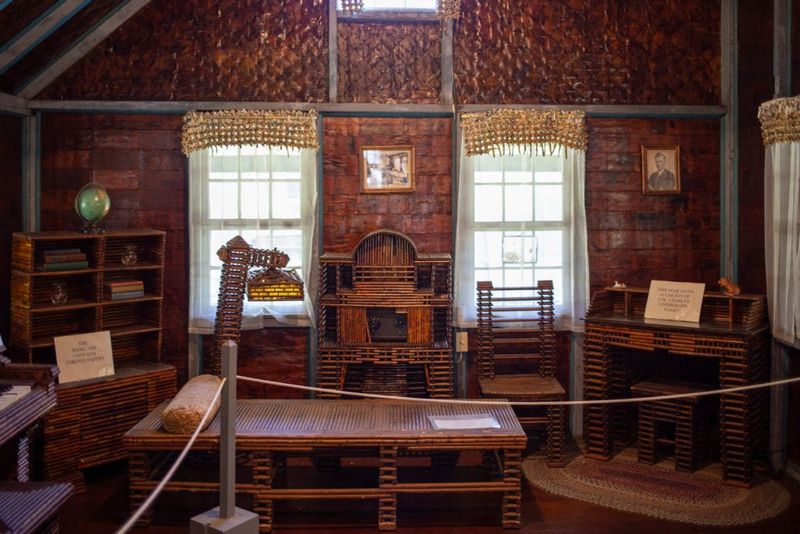
Stenman didn’t stop at walls. He crafted chairs, tables, lamps, and even a desk completely from rolled and varnished newspapers. Each piece of furniture demonstrates incredible craftsmanship and engineering skill. The newspaper furniture remains sturdy enough that some pieces could still support weight today.
A grandfather clock made entirely of newspaper stands as one of the most impressive items in the collection. Stenman also created a piano case, bookshelf, and writing desk using the same techniques. Every item showcases different newspaper mastheads and headlines, making each piece unique.
Tourists love photographing these one-of-a-kind furnishings and marveling at the intricate details. The varnish coating gives the furniture a glossy, protective finish that has preserved it beautifully. Seeing a chair made from Sunday comics or a table featuring sports pages brings smiles to everyone who visits.
4. Special Themed Newspaper Sections

Stenman organized certain areas of the house using newspapers with specific themes. One section features papers covering Charles Lindbergh’s famous transatlantic flight in 1927. Another area highlights news from World War II and major political events of that era.
A writing desk made from newspapers about Herbert Hoover’s presidential campaign stands out as a historical treasure. Stenman also created pieces using papers covering famous aviators, sports heroes, and scientific discoveries. This thematic approach adds educational value to the artistic achievement.
History buffs find these themed sections particularly fascinating because they offer glimpses into what people read and cared about decades ago. The preserved headlines capture the excitement, fears, and hopes of different time periods.
Reading these vintage papers makes you appreciate how much the world has changed while some human concerns remain timeless.
5. Surprisingly Durable Construction

Despite being made from paper, the house has withstood New England weather for almost 100 years. Stenman’s engineering background helped him develop techniques that made the newspaper walls resistant to moisture and decay. The tight rolling and special adhesive created a material stronger than most people would expect.
The house sits on a traditional foundation with a wooden frame providing structural support. Newspaper fills the walls between the frame members, acting as both insulation and exterior covering. A protective roof and careful maintenance have helped preserve this unusual structure through harsh winters and humid summers.
Visitors often express amazement that paper walls can survive decades of coastal weather conditions. The house stands as proof that unconventional materials can work when applied with skill and knowledge.
This durability inspires modern discussions about sustainable and creative building materials.
6. Open to Visitors as a Quirky Museum

The Paper House operates as a seasonal attraction where tourists can explore this architectural oddity firsthand. Guides share stories about Stenman’s life and building techniques during tours. The intimate size of the house means small groups get personalized attention and can ask plenty of questions.
Photography is encouraged, so visitors snap countless pictures of the unusual walls and furniture. The admission fee remains affordable, making it accessible for families and budget travelers.
Many people combine their visit with trips to other Rockport attractions like the famous Motif Number 1 or the scenic Bearskin Neck shops.
Reviews consistently praise the friendly staff and the unique experience the museum offers. People appreciate learning about this slice of American ingenuity and creativity. The quirky nature of the house makes it a perfect stop for anyone seeking offbeat travel experiences along the Massachusetts coast.
7. A Testament to Recycling Before It Was Trendy
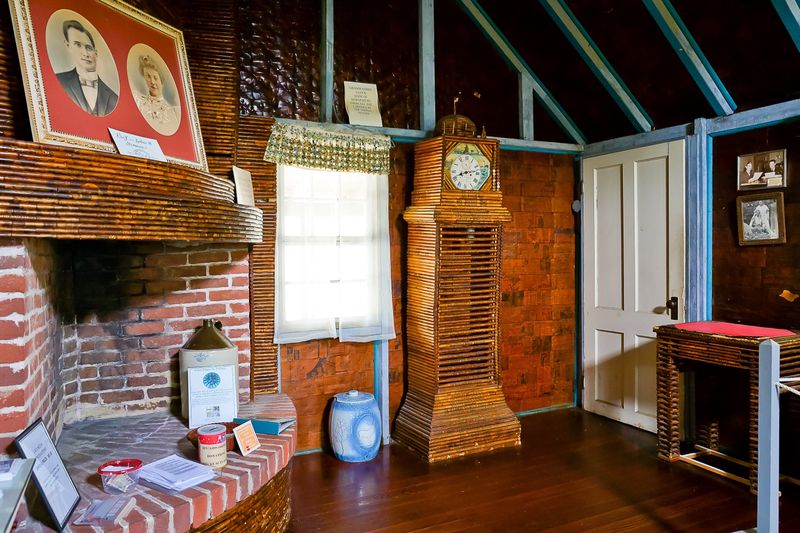
Long before environmental movements made recycling popular, Stenman demonstrated the potential of reusing materials creatively. He transformed what most people would discard into a functional, artistic dwelling.
This forward-thinking approach makes the Paper House relevant to modern conversations about sustainability and waste reduction.
Stenman’s project shows how everyday items can gain new life through imagination and effort. He proved that trash can become treasure when someone applies skill and vision. The house stands as an early example of upcycling, a concept that has gained tremendous popularity in recent years.
Environmental educators sometimes reference the Paper House when teaching about creative reuse and sustainable living. The structure reminds us that innovation often comes from questioning assumptions about what materials can do.
Stenman’s legacy encourages people to think differently about waste and the possibilities hidden in ordinary objects.
8. Featured in Numerous Travel Shows and Articles
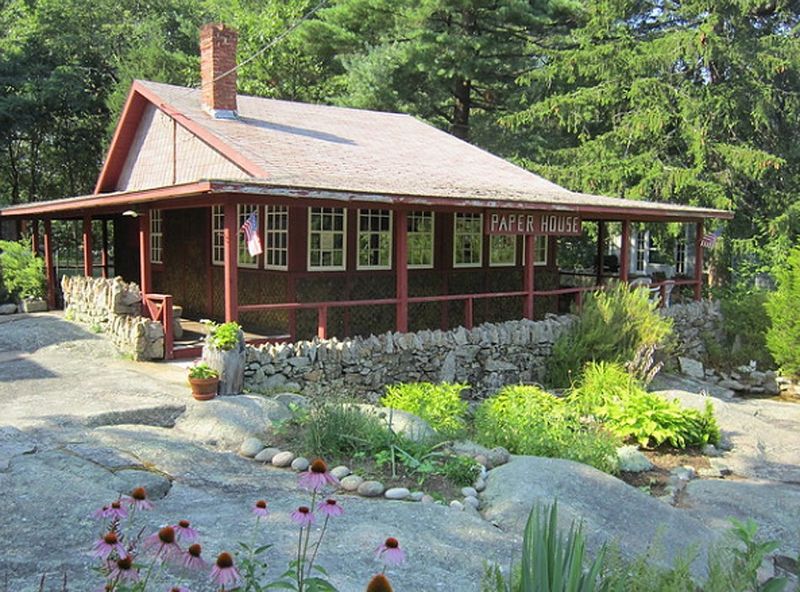
The Paper House has appeared in travel documentaries, magazine articles, and television programs highlighting unusual American roadside attractions.
Its unique construction and fascinating story make it perfect for content creators seeking interesting subjects. Social media has brought renewed attention, with visitors sharing photos and videos that reach global audiences.
Travel bloggers frequently include the Paper House in lists of quirky New England destinations. The house has gained a cult following among people who seek out odd and offbeat tourist spots. This media attention helps keep the attraction thriving and introduces new generations to Stenman’s remarkable achievement.
Many visitors report discovering the house through online articles or friends’ recommendations on social platforms. The photogenic nature of the newspaper walls and furniture makes it highly shareable content.
This word-of-mouth publicity ensures the Paper House remains a must-see stop for curious travelers exploring the Massachusetts coast.
9. Located in Scenic Rockport

Rockport provides the perfect setting for this unusual attraction, with its artistic community and coastal charm. The town is known for welcoming creative spirits and celebrating unique expressions of art and architecture.
Visitors can easily spend a full day exploring Rockport’s galleries, restaurants, and scenic harbor views.
The Paper House sits in a residential area, giving it a neighborly, accessible feel. Getting there is straightforward, with clear signage directing travelers from the main roads. Parking is available, making it convenient for families and groups visiting by car.
Many tourists appreciate combining their Paper House visit with walks along Rockport’s rocky beaches or browsing the town’s many art studios. The area offers beautiful ocean views, fresh seafood restaurants, and a relaxed atmosphere perfect for vacation days.
Rockport’s compact size means everything is close together, making it easy to experience multiple attractions without rushing.
10. A Legacy That Continues to Inspire
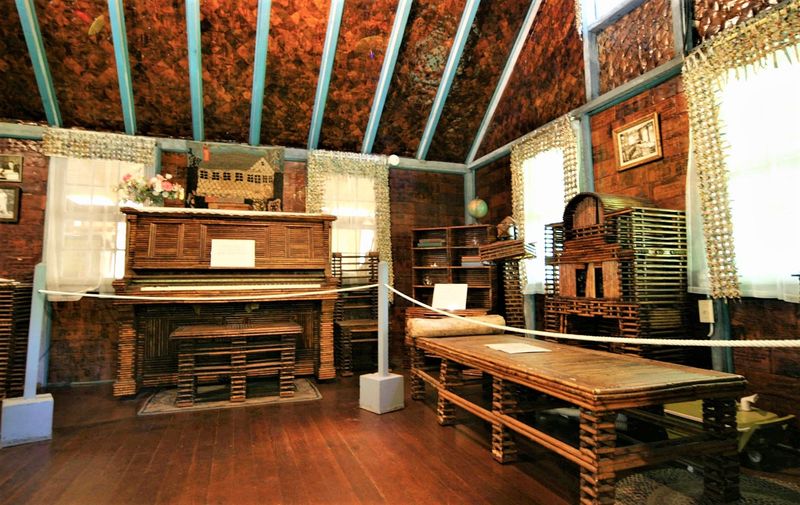
Elis Stenman passed away in 1942, but his creation continues to spark imagination and wonder in everyone who visits.
His daughter and later caretakers have preserved the house, ensuring future generations can experience this remarkable experiment. The family’s dedication to maintaining the property honors Stenman’s vision and creativity.
Artists, builders, and dreamers find inspiration in Stenman’s willingness to try something completely different. The Paper House proves that ordinary people can create extraordinary things when they follow their curiosity.
Students studying architecture, engineering, or art history often cite it as an example of innovative thinking outside conventional boundaries.
The house reminds visitors that passion projects can become lasting legacies. Stenman probably never imagined his summer hobby would still attract tourists nearly 100 years later.
His story encourages everyone to pursue creative ideas, even when others might think they’re a bit strange or impractical.
Dear Reader: This page may contain affiliate links which may earn a commission if you click through and make a purchase. Our independent journalism is not influenced by any advertiser or commercial initiative unless it is clearly marked as sponsored content. As travel products change, please be sure to reconfirm all details and stay up to date with current events to ensure a safe and successful trip.